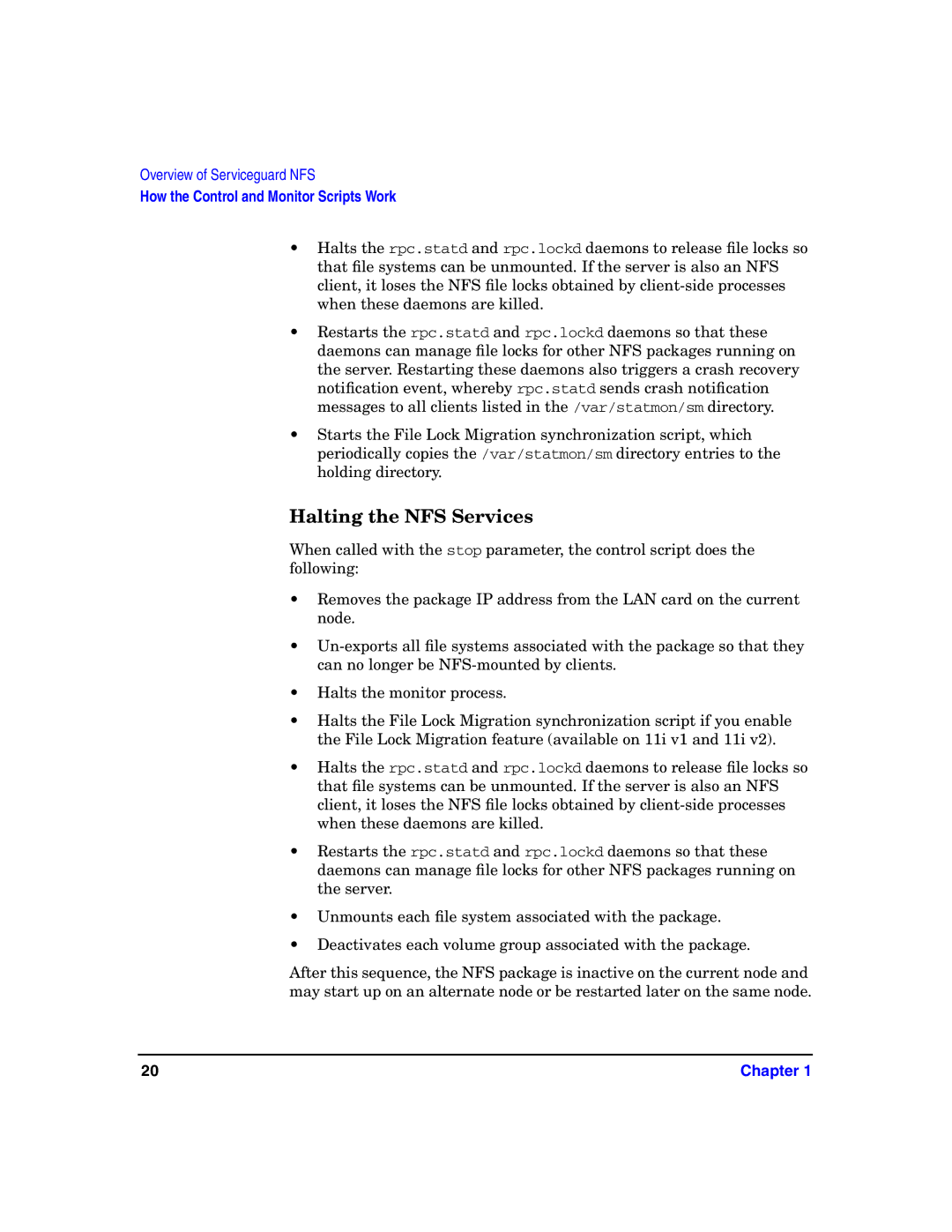Overview of Serviceguard NFS
How the Control and Monitor Scripts Work
•Halts the rpc.statd and rpc.lockd daemons to release file locks so that file systems can be unmounted. If the server is also an NFS client, it loses the NFS file locks obtained by
•Restarts the rpc.statd and rpc.lockd daemons so that these daemons can manage file locks for other NFS packages running on the server. Restarting these daemons also triggers a crash recovery notification event, whereby rpc.statd sends crash notification messages to all clients listed in the /var/statmon/sm directory.
•Starts the File Lock Migration synchronization script, which periodically copies the /var/statmon/sm directory entries to the holding directory.
Halting the NFS Services
When called with the stop parameter, the control script does the following:
•Removes the package IP address from the LAN card on the current node.
•
•Halts the monitor process.
•Halts the File Lock Migration synchronization script if you enable the File Lock Migration feature (available on 11i v1 and 11i v2).
•Halts the rpc.statd and rpc.lockd daemons to release file locks so that file systems can be unmounted. If the server is also an NFS client, it loses the NFS file locks obtained by
•Restarts the rpc.statd and rpc.lockd daemons so that these daemons can manage file locks for other NFS packages running on the server.
•Unmounts each file system associated with the package.
•Deactivates each volume group associated with the package.
After this sequence, the NFS package is inactive on the current node and may start up on an alternate node or be restarted later on the same node.
20 | Chapter 1 |
